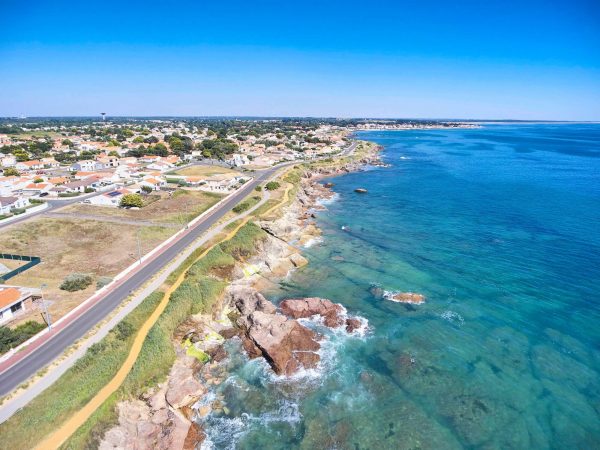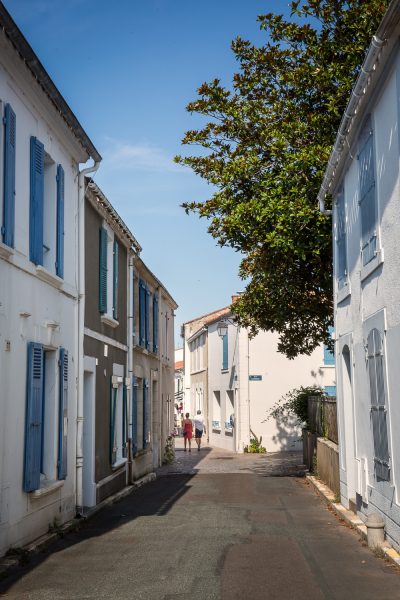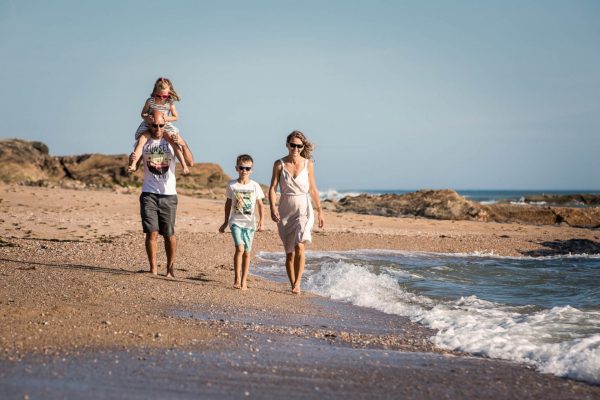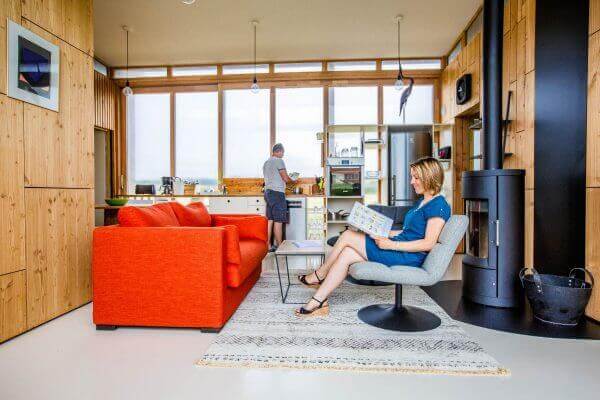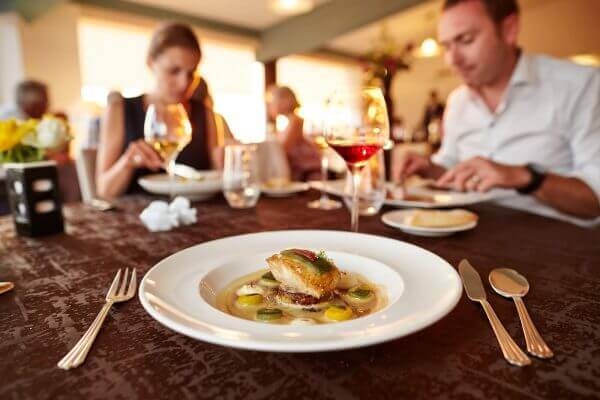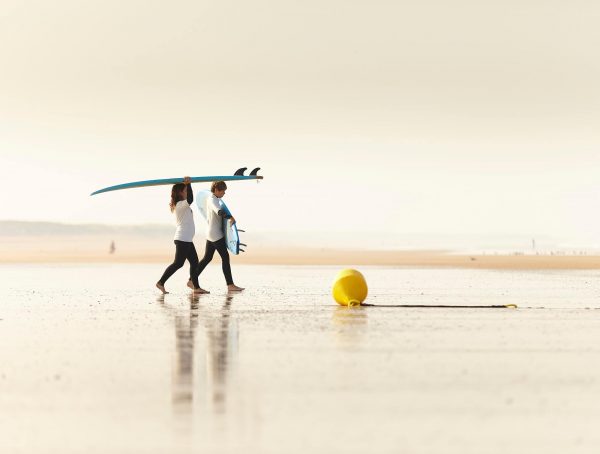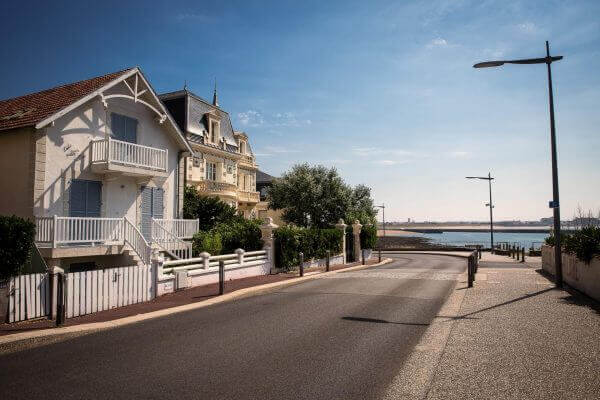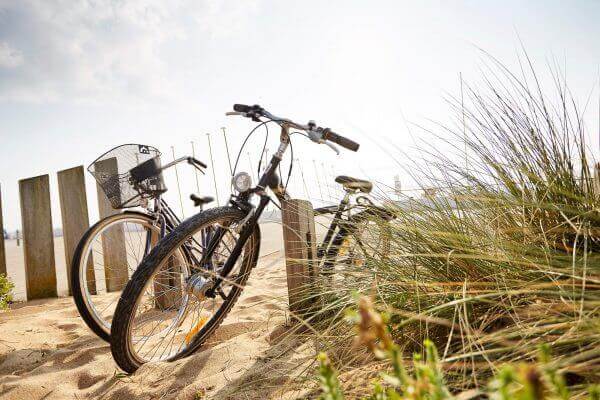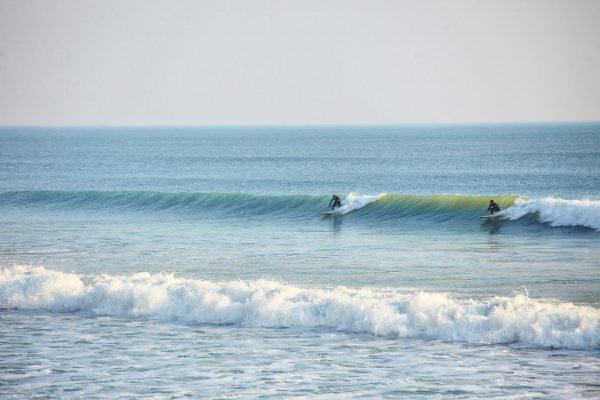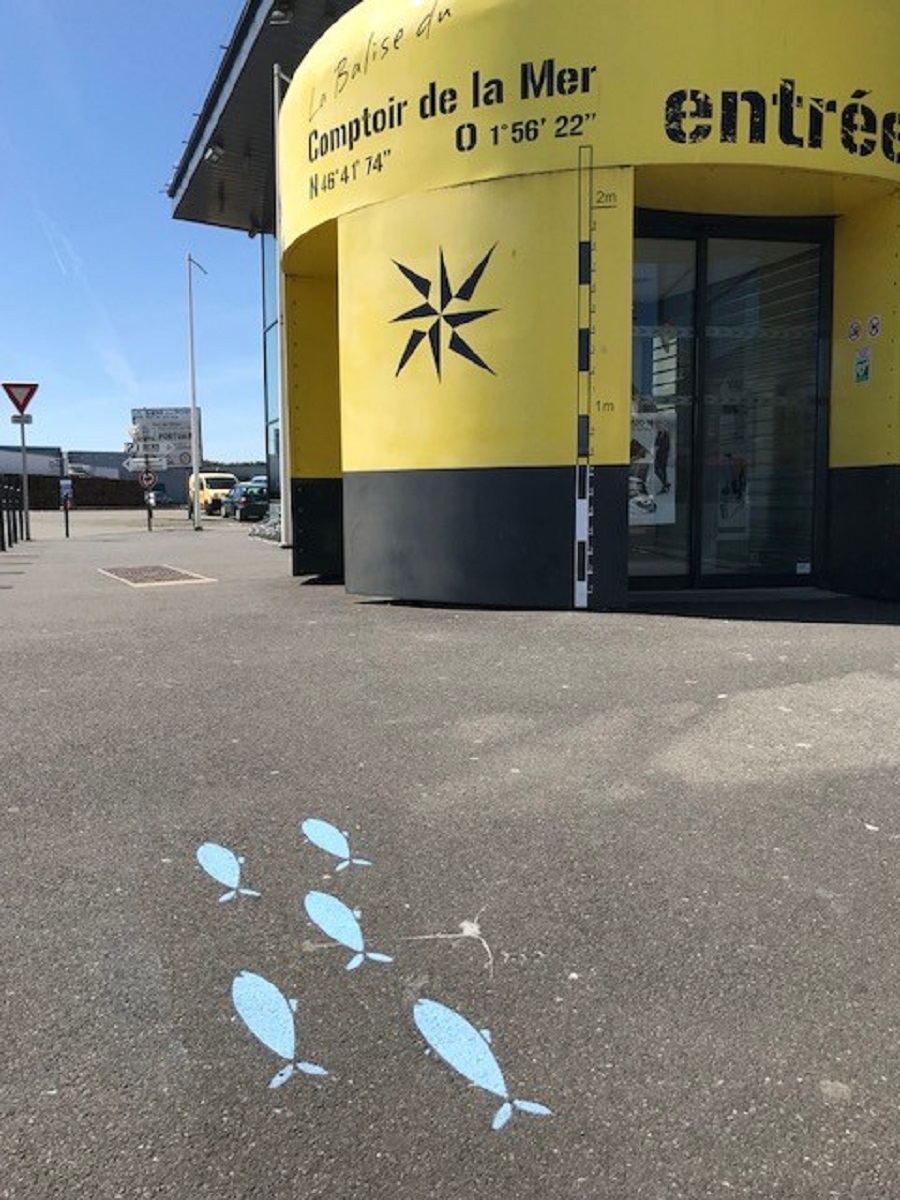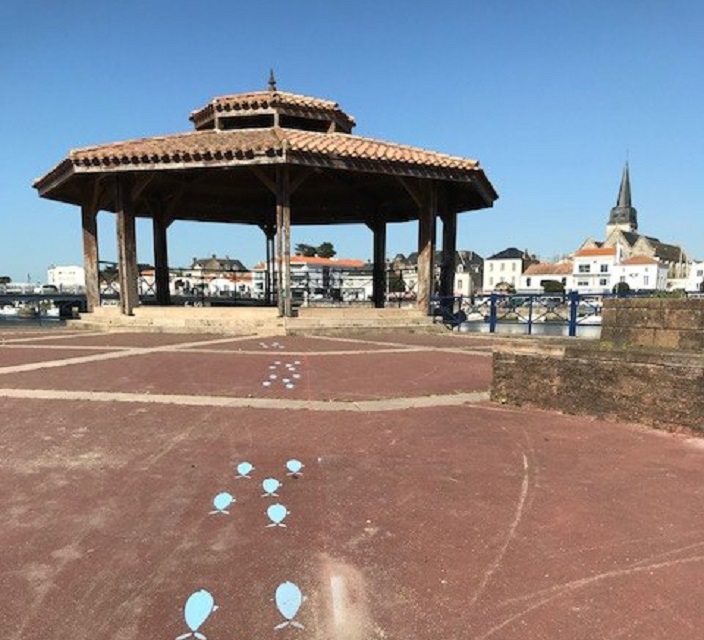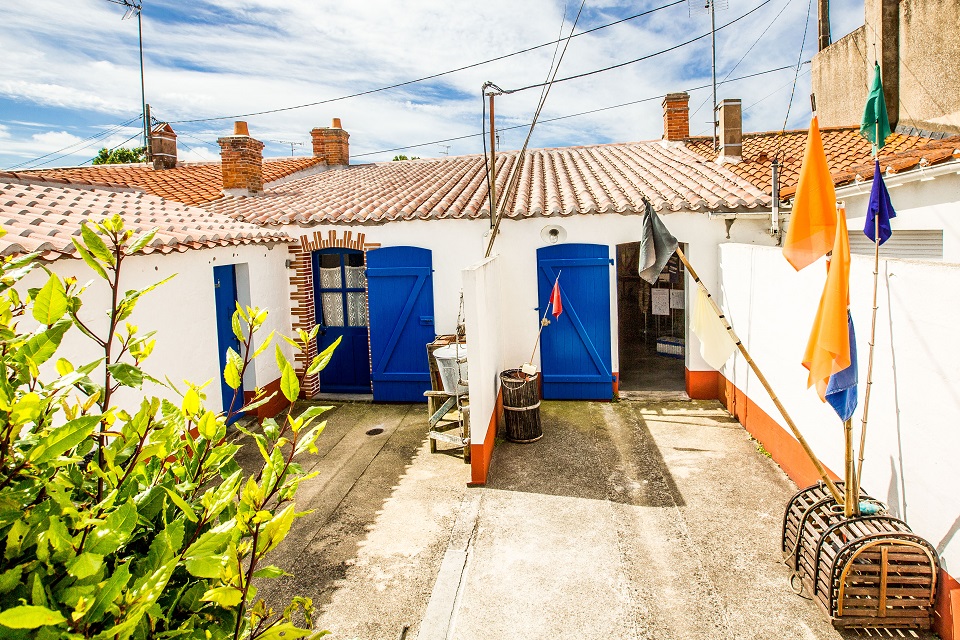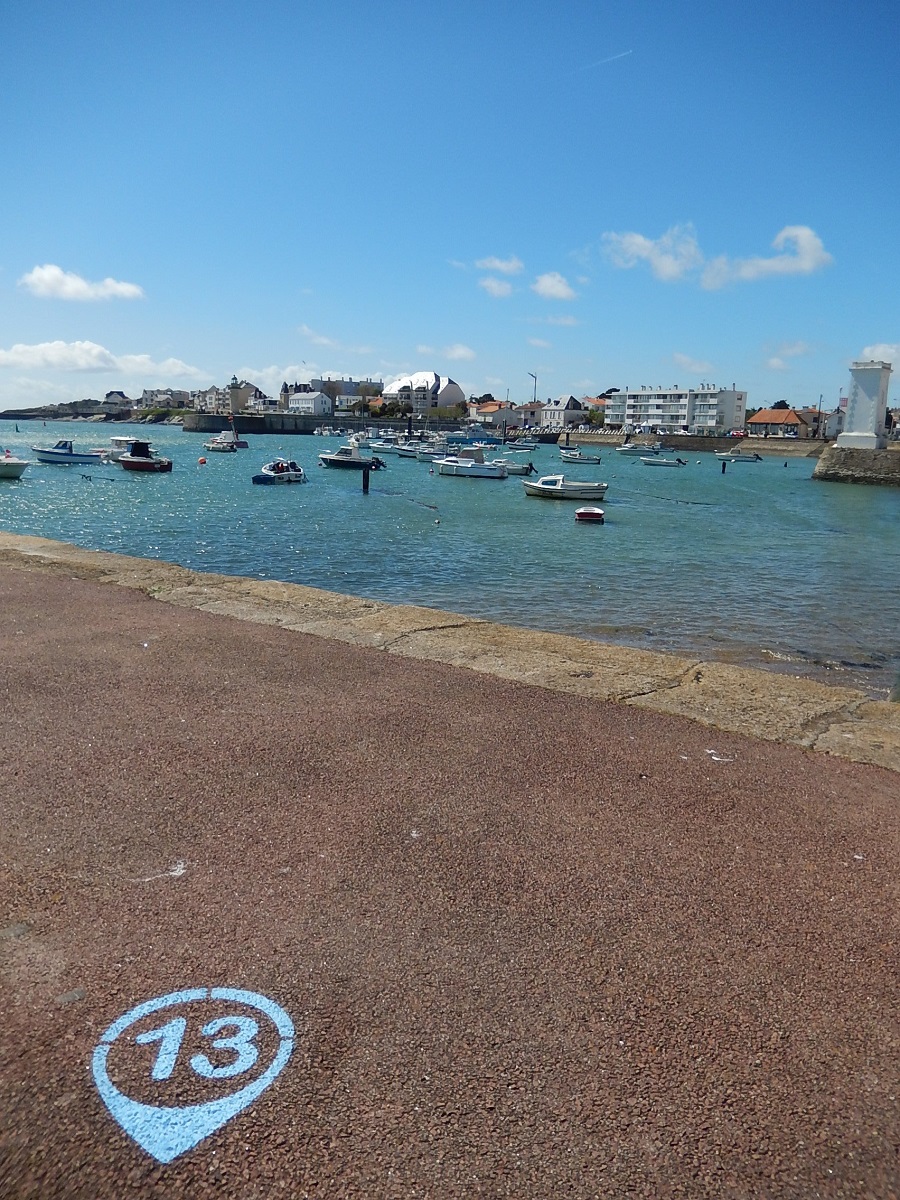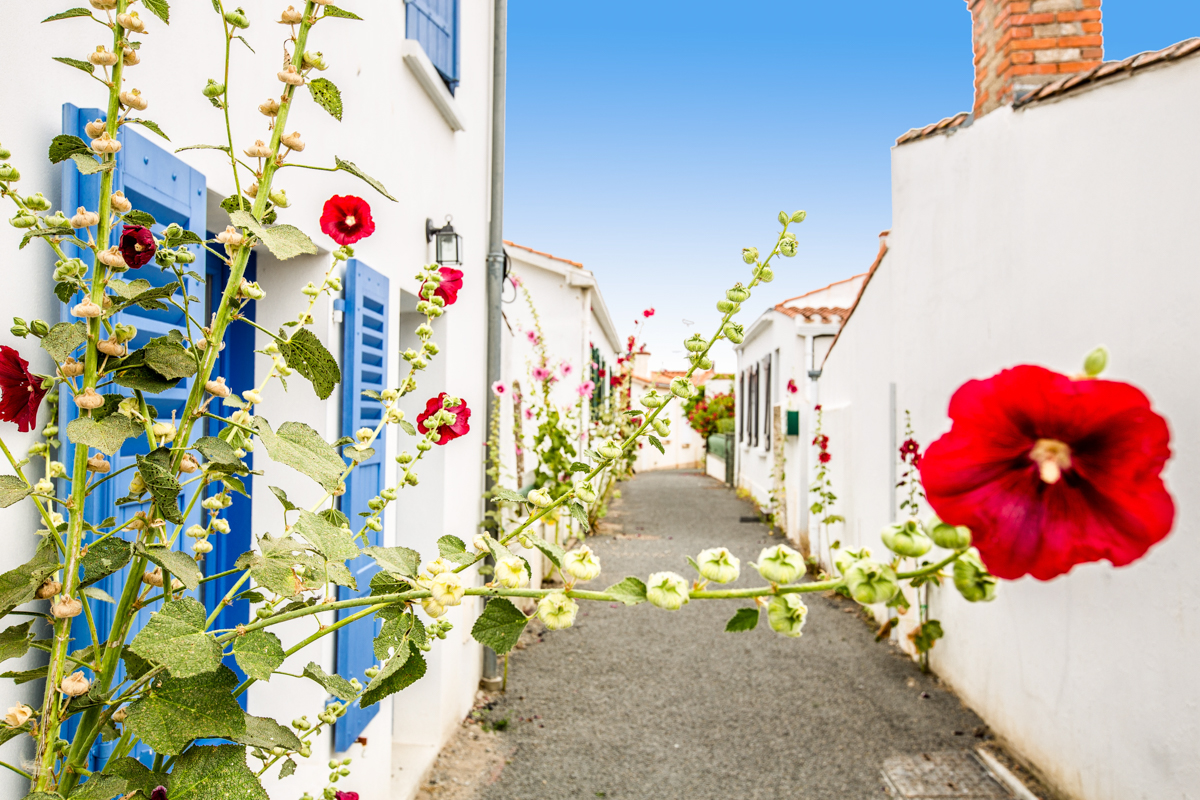I went on an exploration along the Chemin de la Sardine walking tour, following the famous blue fish of Saint-Gilles-Croix-de-Vie.
This 2-km walking tour is accessible to all and will guide you to 14 points of interest in Saint-Gilles-Croix-de-Vie
Fish market dock, where sardine fishing here began
I was intrigued by the little blue fish on the ground around the port, so I went to the Tourist Office to find out more.
What do these sardines actually mean?
I picked up a detailed map and some explanations and set off on a 1 hour – 1.5 hour walk on this original tour through the seaside town of Saint-Gilles-Croix-de-Vie. I followed the sardines straight on and found myself on the dock of the fishing port. The seagulls that had flocked to the area were a sign that a fishing boat was coming into the port, with fresh sardines ready to sell directly to the customers. The height of the sardine season is between April and September. I walked around the fish market dock to see the crates of fish and where the boats unload their fresh catch. Another boat arrived while I was there. The fishermen were working hard unloading their precious cargo.
The marina – Saint-gilles-croix-de-vie

I carried on along the route which took me away from the fishing port. Very quickly, I arrived at the marina and immediately felt the peaceful atmosphere there. I was surrounded by the sounds of the masts clicking away in the breeze and the little white boats bobbing up and down on the waters. I sat down on a bench near pontoon 6 to admire the traditional fishing boat, ‘Le Hope’, which is now listed as Maritime and Industrial Heritage of Vendée. I strolled along the Promenade Marcel Ragon and enjoyed the view of the Church of Saint-Gilles and the left banks of the river Vie.
la petite île, known as the ‘quartier du maroc’
When I reached the Bénéteau bandstand, the sardines guided me to the left and I found myself in the narrow streets lined with buildings made from ballast stone. This is the area of town known as the Quartier du Maroc, where the fishermen once lived. In the 16th century, the descendents of the Moors of Spain, known as Moroccans, came here to teach the local fishermen their fishing technique. TheMaison du Pêcheur, a fisherman’s house from the 1920s on the Rue du Maroc, is a shining example of the maritime heritage of this small area of town. I recommend venturing inside for a tour (open during the peak season only, entrance fee required).
The heritage sites of Saint-Gilles-Croix-de-Vie
The maze of little streets leads to the Place Kergoustin and the impressive Church of Saint Croix where you can see stained-glass windows and a wall fresco by local painter Henry Simon.
I carried on walking along the Quai de la République, alongside the railroad tracks and towards the shop La Perle des Dieux. This is the last canning factory in Saint Gilles Croix de Vie, founded by the Gendreau family, 130 years ago. They sell canned fish caught locally, under the brand name ‘La Perle des Dieux’. This is the perfect place to find some iconic souvenirs from your stay in Saint-Gilles-Croix-de-Vie. There’s something for everyone, choose from the selection of canned grilled sardines, ready-to-fry sardines, classic sardines, etc. You’re in for a treat!
View of Adon Bay and time for some grilled sardines
The route then takes a left and leads to a superb view of Adon Bay and to the far side of the port where you’ll see the town’s oldest lighthouse, the Tour Joséphine. I stopped here for a while to admire the peaceful surroundings and wonderful colours.
As I walked along the fishing port, I came across a local establishment, run by Serge and couldn’t resist tasting his delicious grilled sardines (the Banc des Sardines, open during the peak season). This was the last stop on my superb adventure along the Chemin de la Sardine walking tour!
Get a detailed map of the Chemin de la Sardine
Available free-of-charge from the Pays de Saint Gilles Croix de Vie Tourist Information Offices or to download.



